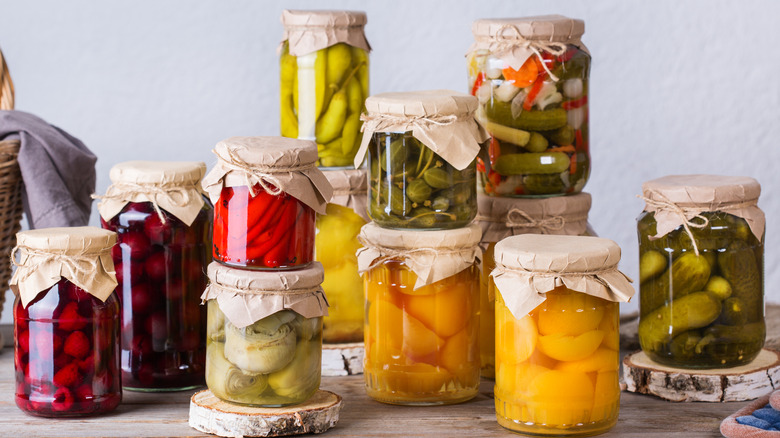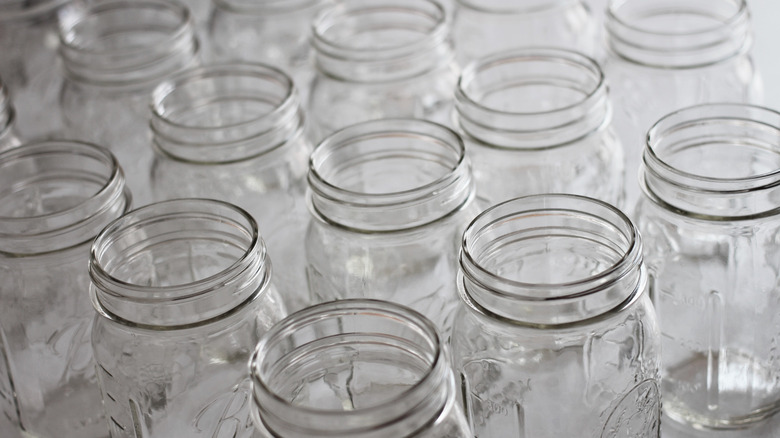The Jar Rule To Remember For Freezing Homemade Canned Goods
Practically since people started growing food, they've been finding creative ways to preserve it for leaner times when fresh food is harder to come by. Enter freezing homemade canned goods to preserve food for a rainy day — a practice that modern cooks still use to "put up" food for later, increase self-reliance, save money, and other benefits. To be clear, this doesn't mean simply freezing already-canned foods from the store, which is unadvised and can even be dangerous. We're talking about the practice of freezing fresh produce like tomatoes or prepared soups to be enjoyed at a later date. The most important step here is choosing the right container to freeze them in: a wide mouth glass jar versus a regular or narrow mouth one.
Chances are, you've got a bevy of jars in a range of shapes and sizes hanging out in your cabinets, but using a wide mouth jar is crucial when freezing is involved, and can make or (literally) break the success of freezing your homemade canned goods. If you're unfamiliar with the difference, this just means a jar with an opening at the top that is the same width as the jar, as opposed to a regular mouth jar with a neck that scoops in for a narrow opening. The right sized jar is key for preventing breakage in the freezer, which of course, no one wants.
How to use a wide neck jar for freezing goods
Without getting too deep into the science, if you've ever left a bottle or glass container in the freezer too long, you already know that glass can easily shatter upon freezing. The trick to avoiding this is to always freeze in wide mouth jars, as the scooped-in "shoulders" of a regular jar are susceptible to shattering under pressure when they freeze.
Speaking of avoiding broken glass and ruined food, before you ladle that soup or those stewed tomatoes into your wide mouth jar, be sure to let everything cool down completely. Introducing hot food into a cool jar can also create cracks. Finally, you may recall from science class that water expands as it freezes, so be sure to leave a good inch or more of space at the top of your jar. (Also, let the contents gradually warm up when you take them out to defrost and eat.) For best results, it's important to use freezer safe Mason jars or others specially designed for canning and freezing. The glass they're made of will be tempered to withstand changing temperatures and expansion. They will also be marked with handy fill lines, helping ensure your homemade freezing project is an economical, practical, and delicious success.

